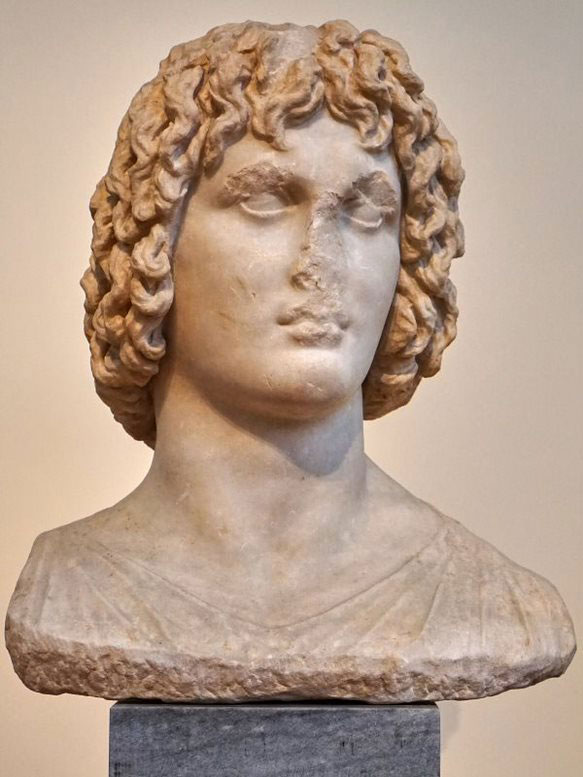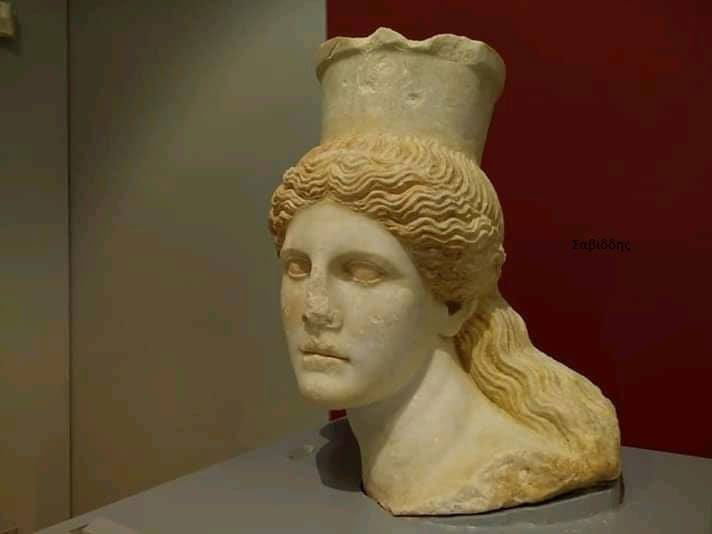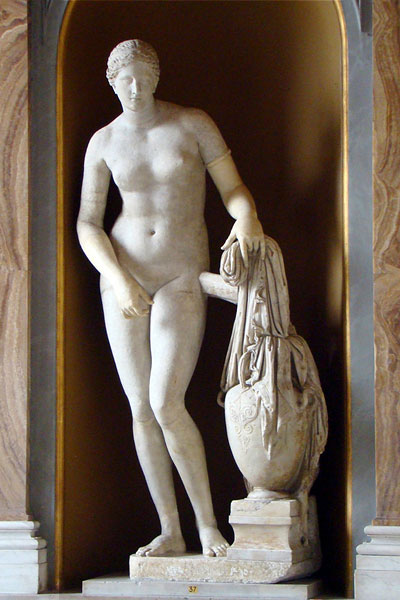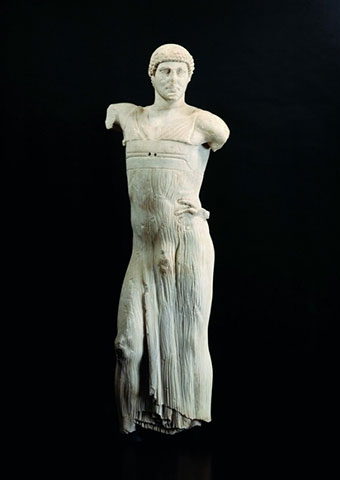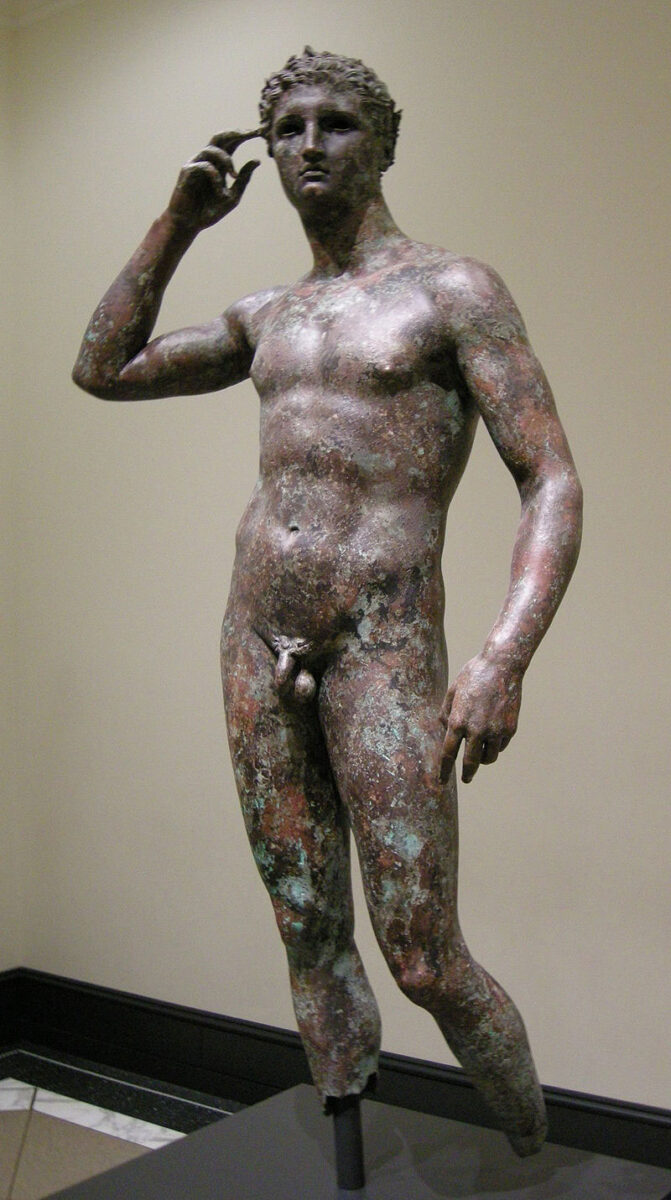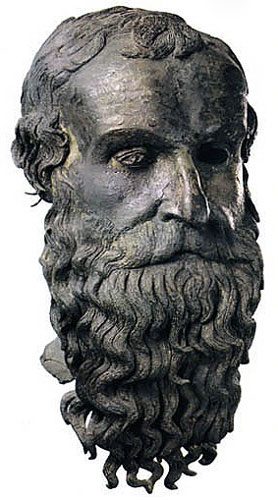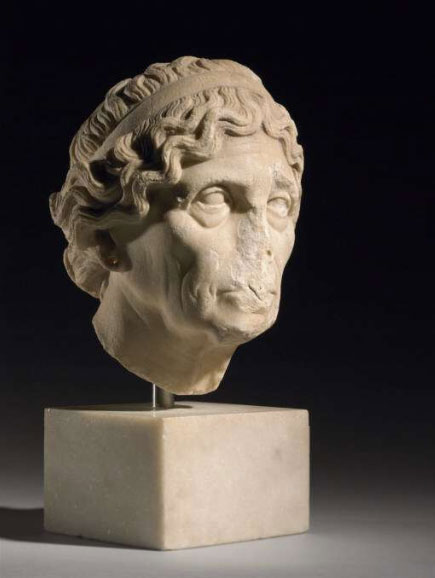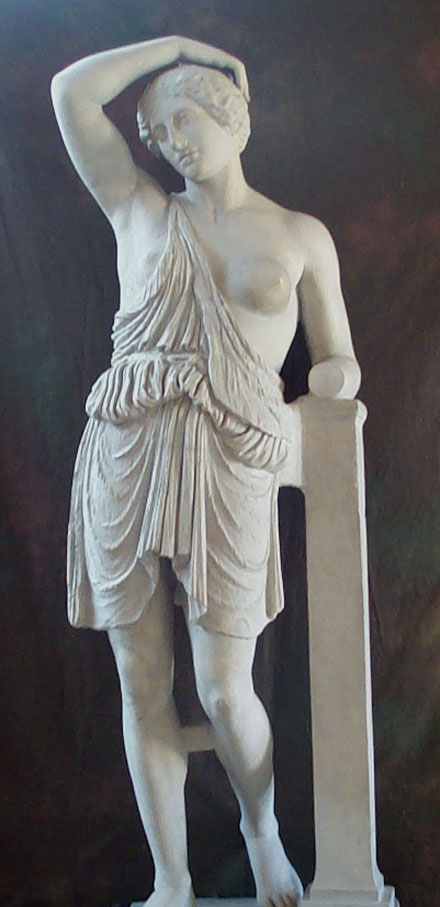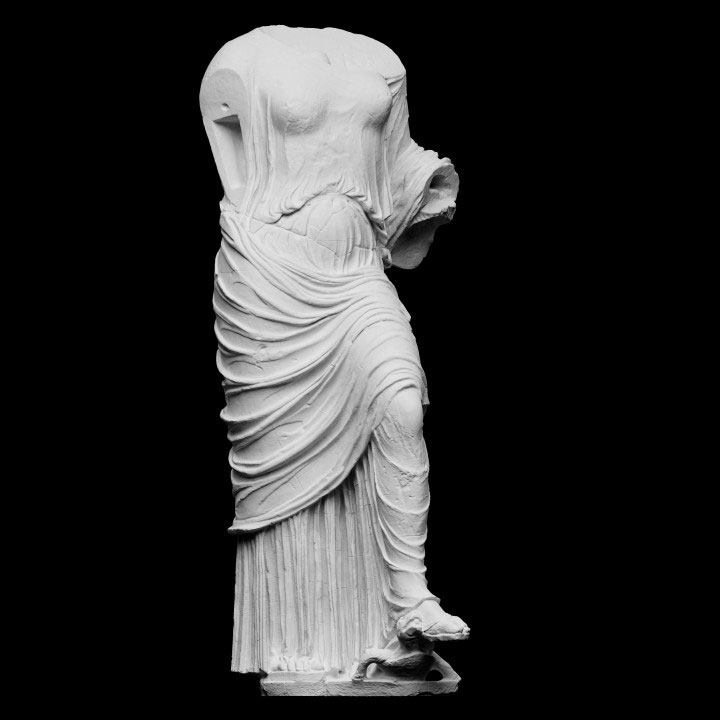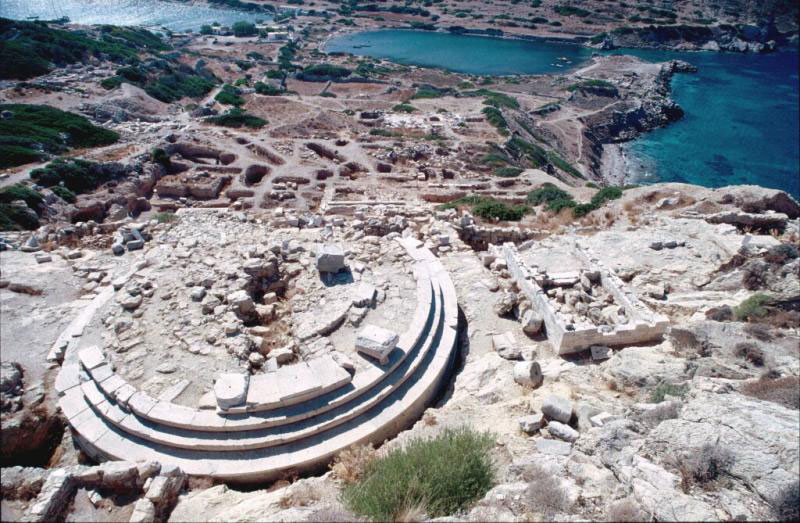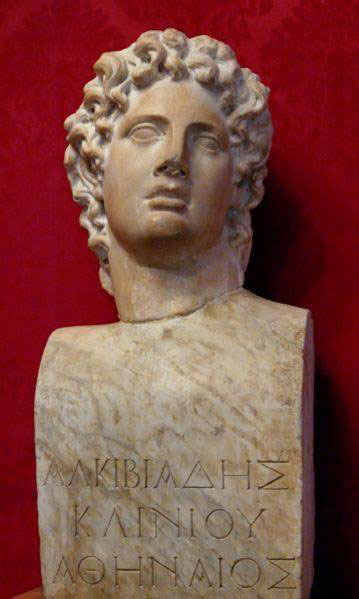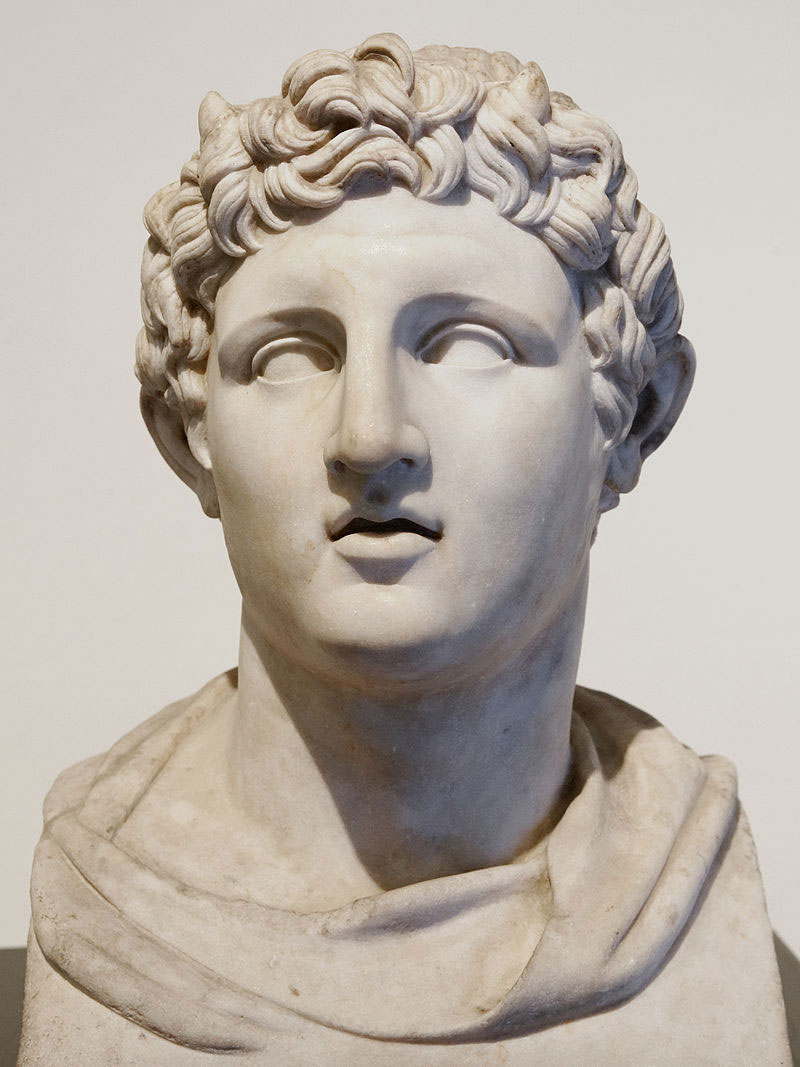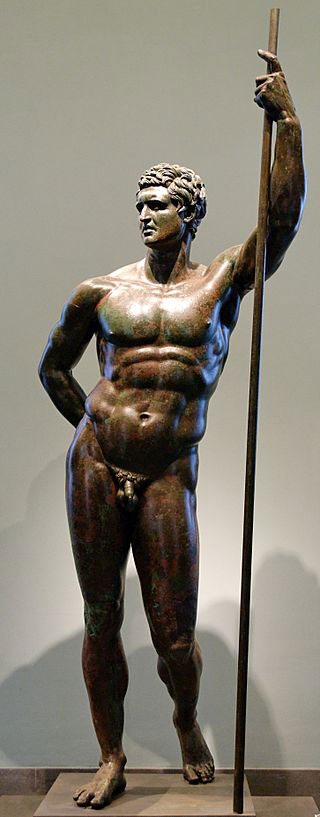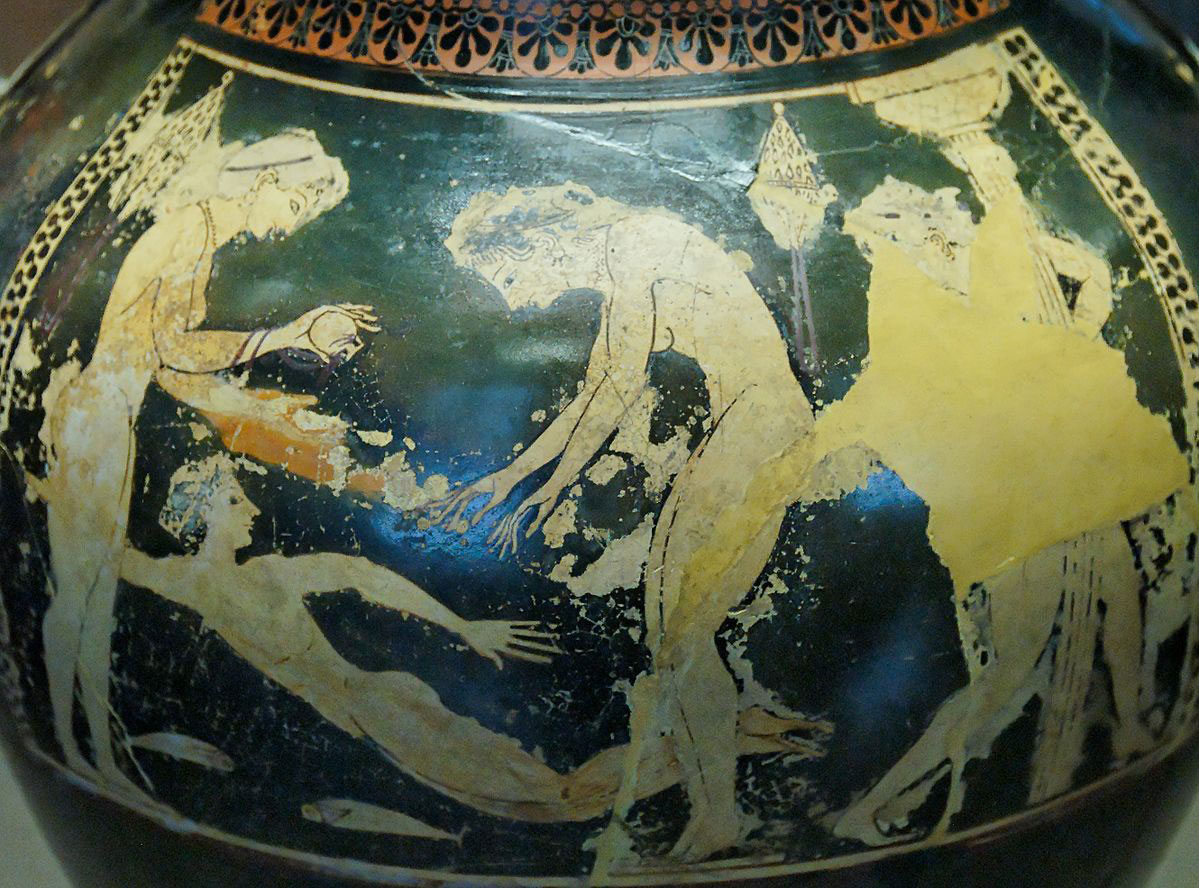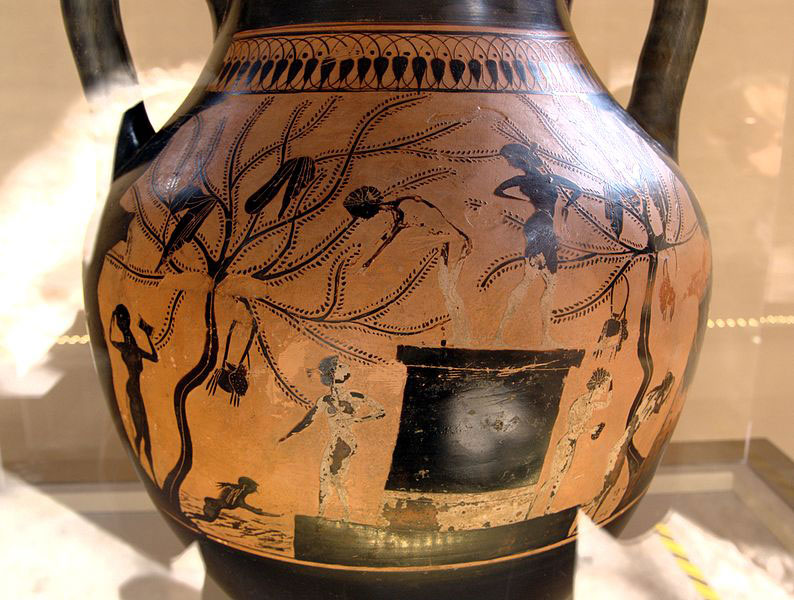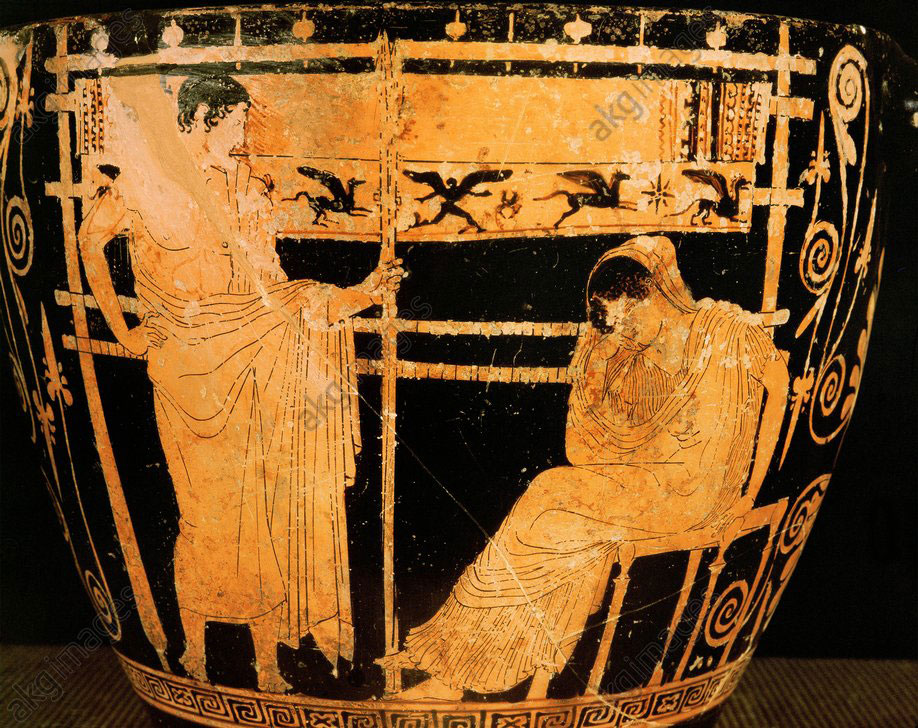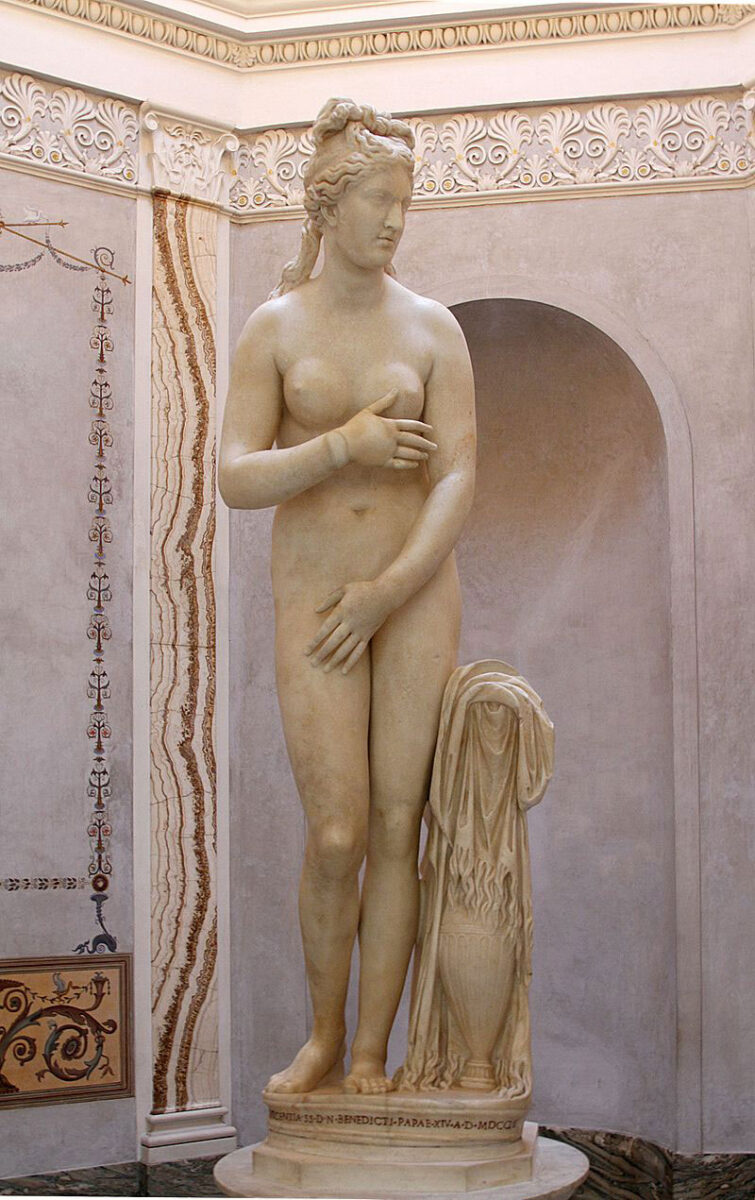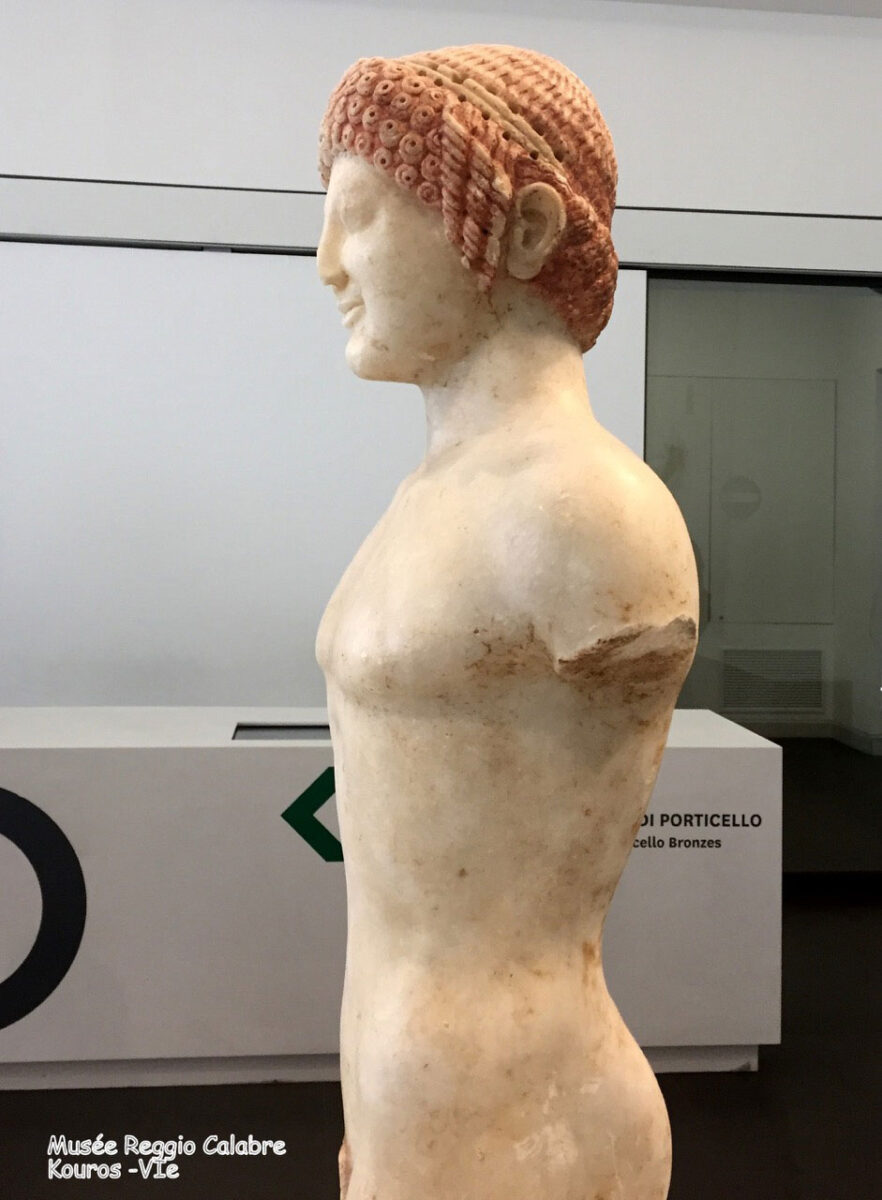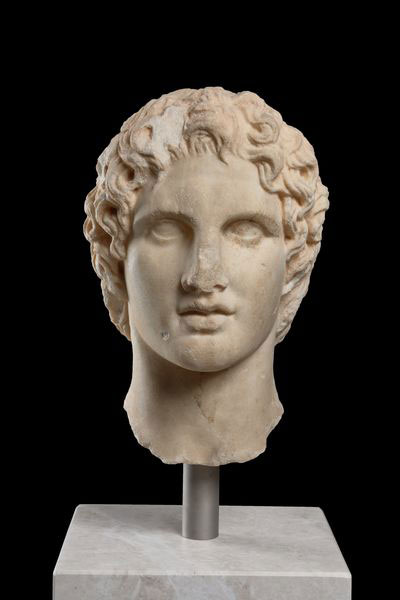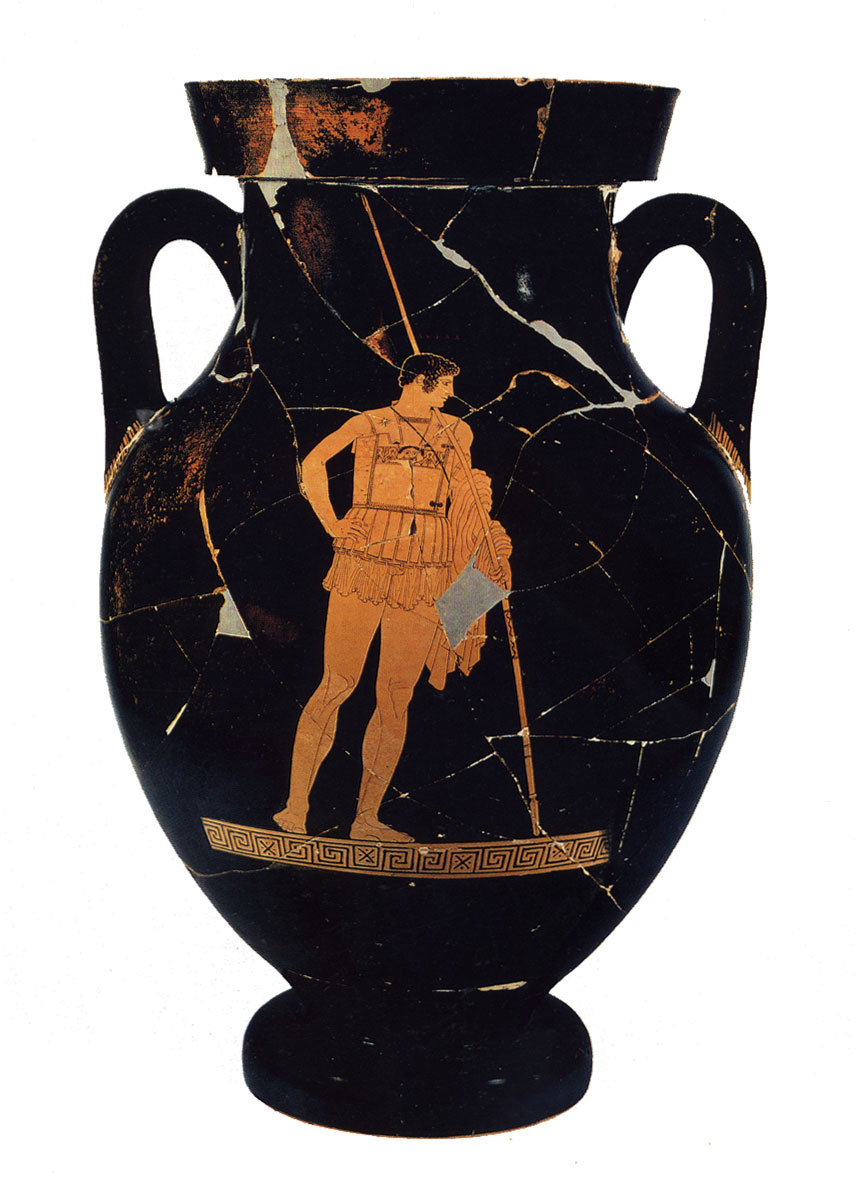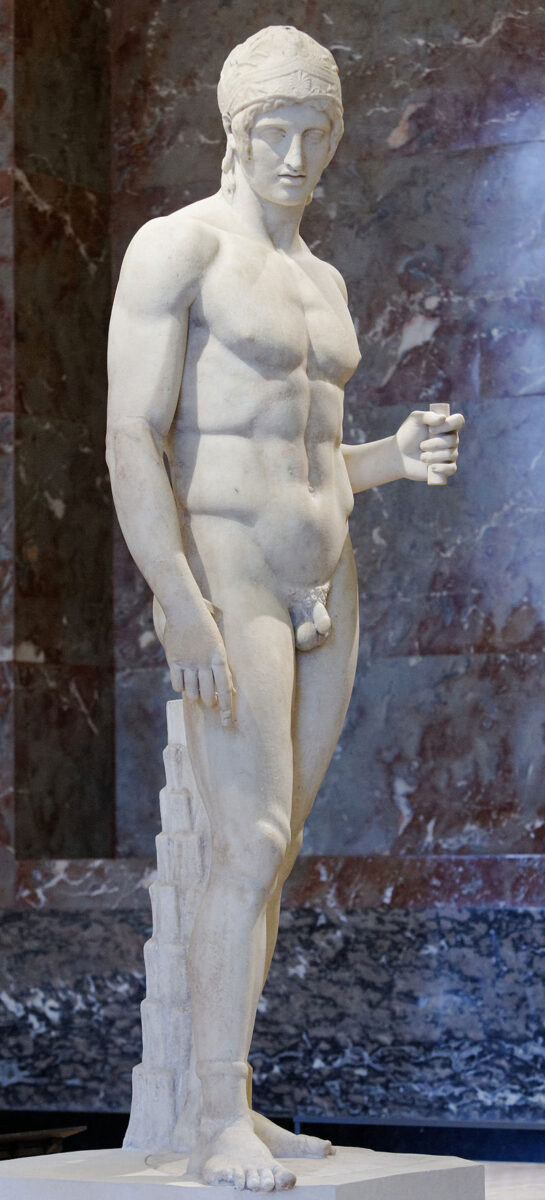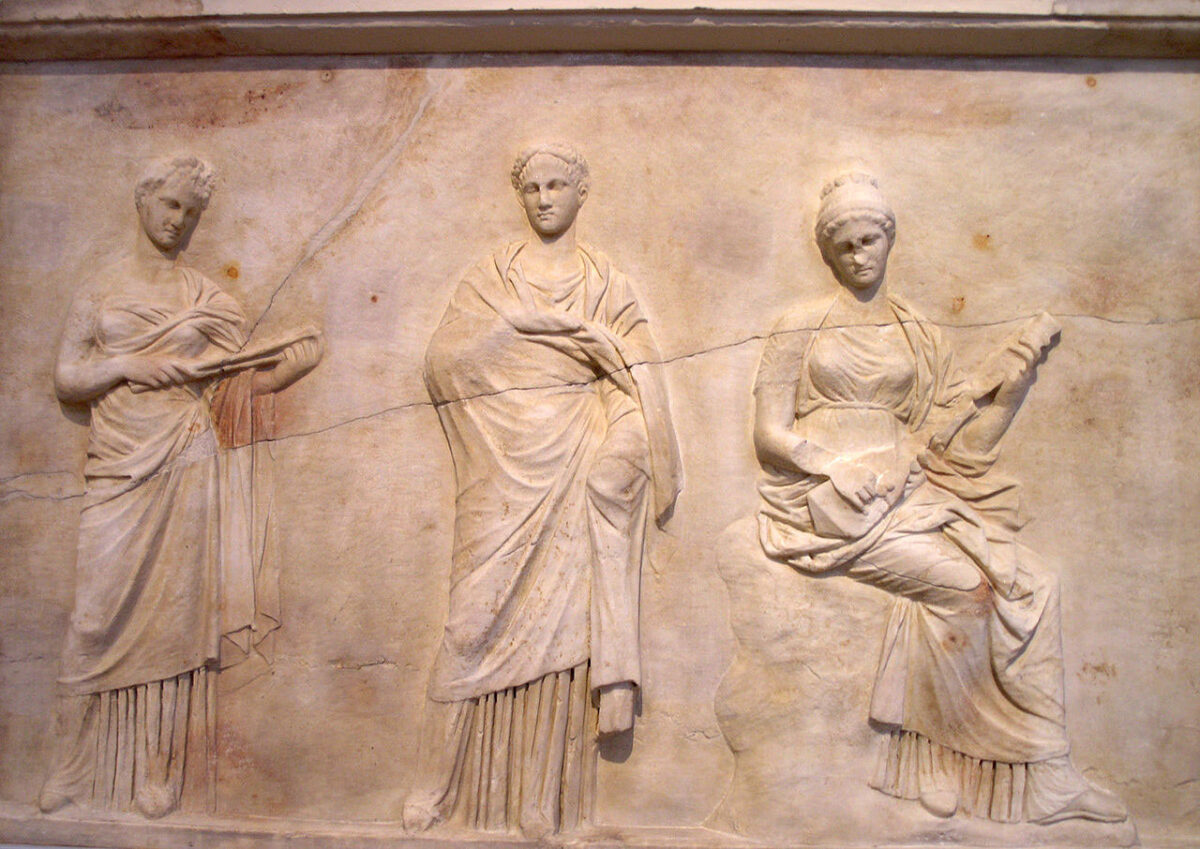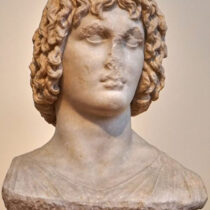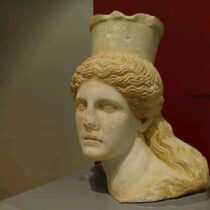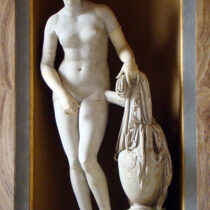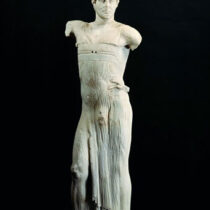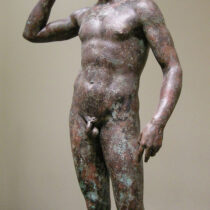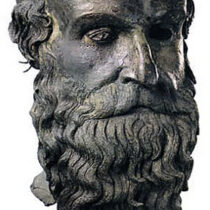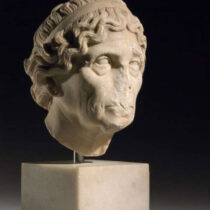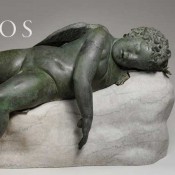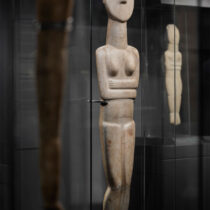Review of N. Ch. Stampolidis and I. D. Fappas (eds.), Kallos. The ultimate beauty, Athens (2021), pp. 768. ISBN 978-618-5060-41-1.
This is the catalogue of an exhibition promoted both by the Museum of Cycladic Art and by the Ministry of Culture and Sports and held in the Museum of Cycladic Art from September, 2021 to January, 2022. The book is divided in two sections: a series of essays and the proper catalogue.
An introduction by the Minister of Culture and Sports, Dr. Lina Mendoni, opens the book.
The first essay is by the curator of the exhibition as well as editor of the catalogue (pp. 31-86): It is a guide through the exhibition, with comments related to the various objects and works of art which are exhibited. The author stresses that the need for beauty is a basic feature of the ancient Greek civilization and refers continuously to the spiritual energy of the glory that was Greece. This is welcome news. From the 1960s onwards, we saw tens of so-called ‘holistic’ reconstructions of Greek societies, in which the aesthetic function was forgotten. The basic dogma during these decades was that ancient Greece was a civilization as many others, ‘without miracle’, as it was stressed. Thus the bold assertion of this author is a radical charge of direction in the study of ancient Greece.
The second praise of this essay consists in the continuous use both of visual evidence and of written texts together in order to illustrate the greatest exploit of beauty which humanity experienced.
The third praise is the literary quality of this article, which has a poetic flavor.
A shortcoming is the fact that crucial regions of the Greek oikoumene, such as the Greece civilizations in Asia Minor and in the Pontic area, are not represented, nor this absence is explained.
Moreover considerations of some works of art look to me at least strange: for example the head of the ‘Eubuleus’ (fig. 1) is analyzed without mention of the standard attribution to Praxiteles, I wonder why. Equally the head of Sphinx from Kasta (fig. 2) is considered without a chronological specification: I believe that the clamps of the masonry of the tumulus, the coin of the reign of Alexander the Great and the pottery still of the late 4th century found in the excavation should have led the author of this essay to provide a date at the end of the 4th c. BC.
The second essay (pp. 89-105) focuses the concept of beauty. The author forwards comparisons of dubious methodological validity between images which pertain to completely different historical contexts and which range from the Knidia (fig. 3) to Matisse. The ancient works of art considered are usually those learned by pupils in the first years of the university. He regards the Knidia ‘Praxiteles’ Aphrodite’, ignoring that we are aware of at least 8 statues of Aphrodite made by this Athenian master (the Knidia, the Koan Aphrodite, the bronze one, later moved to Rome, the Stephanusa, the Pseliumene, the Aphrodite dedicated at Thespiae, the Aphrodite set up at Delphi and finally that erected at Alexandria on Mt. Latmus). Regarding the famous episode of agalmatophilia which affected the Knidia, the author does not cite the most important and detailed source – the Amores attributed to Lucian – nor the Hellenistic antiquarian writer who narrated this gossip (Posidippus, Peri Knidou) but only second-rate Roman references. This essay becomes even pornographic, as it is clarified by note 10 at p. 92 which must be quoted: ‘Sir Kenneth Dover records a moment in a particularly luminous landscape in the Italian hills, which “struck directly at my penis, so I sat down on a log and masturbated, it seemed the appropriate response”‘. Any comment is redundant.
The third essay is by the editor of the book and concerns beauty in early Greek poetry (pp. 107-135). This author reveals a good competence in the field, which most archaeologists do not have. Welcome news are the considerations of the Anacreontea as poems derived from those of Anacreon and of Theognis as the author of most poems handed down under his name: the latter approach goes against thetrend to make even the poems of the corpus Theognideum anonymous and rightly restores the personality of this Megarian poet.
The fourth essay concerns kallos in Plato (pp. 137-147). The author gives a competent survey of the status of beauty in the Platonic oeuvre. The command of the considered issue is excellent. However perhaps he gives to too radical interpretation of Plato’s condemnation of artists as ‘imitative tribe’. Plato in the ‘Sophist’ makes a distinction between the ‘mimetike techne’ to be condemned and the ‘phantastike techne’ which on the contrary is not subjected to such a negative opinion. This subdivision helps us to understand Plato’s praise of Polycleitus, who with his ‘Kanon’ tried to overcome the mimesis in order to reach the ‘idea’ of the young and beautiful man.
The fifth article is a study of the ‘kaloi’ inscriptions (pp. 149-163). The author gives a good presentation of the evidence, with the most important bibliography duly reported and concludes that we are unable to understand the situations which are behind these acclamations. Perhaps the author should have considered also the inscription ‘Pantarkeskalos’ written by Phidias on the Zeus of Olympia: in that case we know who wrote the inscription, who was the young man lavished with this praise, the type of relationship between the two, where and when they met, thus this story is perhaps a key to clarify this social phenomenon.
The sixth essay concerns heroic beauty (pp. 165-171). The author asserts that Hera, herosand hora/horai derive from the same root. In the realm of etymologies the scholar who writes a scientific article must demonstrate why vocals and consonants change from a word to another, which shares the same root and must also provide comparison in other languages of the same family: since Greek language is inside the Indo-European group, we should expect the illustration of similar words in Sanskrit, Tokarian, Persian, Hittite etc. Without this methodological demonstration, this assertion is not scientific.
The seventh article surveys the athletic imagery (pp. 173-201). Two sections of this essay begin with quotations of a boxer and of a rugby player. Both are contemporary Americans and are entirely unrelated to the classical world: why she quotes only American athletes and not sport players from any other part of the world? Moreover the author depends too much on American bibliography and even cites the publications of Mattusch as scientific ones, despite the criticism of her oeuvre from serious scholars (I remind the reader that Mattusch even identified the two Riace Bronzes with Gaius and Julius Caesar: please see C. Mattusch, ‘Naming the “classical” style’, Hesperia Suppl. 33 (2004) 277-290). Even absolutely basic contributions in Italian, such as Rausa’s ‘L’atleta vincitore’, are ignored. For the Mozia statue (fig. 4) she cites an article of a Briton even if the 90% of the bibliography is in Italian. Her definition of the Mozia’s statue as ‘charioteer’ is at best problematic. In the caption to fig. 1 at p. 178, she dates the Getty athlete (fig. 5) to 300-100 BC. While a date in the 3rd c. is still possible, later dates should be excluded. At p. 181 the author claims that ‘until the end of classical times there is no realistic “portrait”‘, citing as support in note 34, as usual, an American writer. What about the Porticello philosopher (fig. 6), whose realism has been noticed by many scholars, or the ‘Lysimache’ (fig. 7) by Demetrios of Alopeke? This statement is really beyond good and evil. At p. 191, note 85, the author asserts that ‘Pausanias (…) does not clarify who sculpted the pediments’ of the temple of Athena at Tegea. In other words, this author endorses the most radical skepticism about the attribution of these pediment sculptures to Skopas which is accepted by most scholars. I wish to stress that the style of these sculptures is similar to that of Skopas’ Maenad and that Pausanias’ attribution of the temple to Skopas must be referred also to its sculptural display because this master was first of all a marble sculptor. Thus, this skepticism has no reason to exist.Beside these shortcomings, this article lacks a clear structure as well as original suggestions.
The eighth article is devoted to female beauty (pp. 203-239). The author provides a survey of female images in the pre- and proto-historic world and in archaic and classical Greece, repeating the communisopinio and without original ideas.At p. 215 she claims that ‘the enigmatic (?) Cannicella “Venus” (fig. 8) was found in the region where (…) the land of Circe is placed’. What? Orvieto, where this statue was found, is very far from the Circeo promontory!!! This lady has a very poor knowledge of the geography of central Italy. Needless to say, she does not cite any of the excellent articles by Italian scholars concerning this statue but, as everywhere in this volume, only a short reference by a scholar who lived and worked in the States.
At p. 218, she reports a supposed attribution of the Sciarra type of Amazon to Phidias (fig. 9). She clearly ignores that this sculptural type is usually attributed to Polycleitus, by a minority of scholars to Kresilas, never to Phidias (see R. Bol, Amazonesvolneratae, Mainz (1998), not cited by the author who prefers to cite, as usual, a less important publication in English). At p. 220, she refers to the Brazza’ Aphrodite (fig. 10) using the word ‘copies’, but only one statue, the Brazza’ one at Berlin, is known for this type of the goddess, and it may well be not a copy but an original statue of the late 5th c. At p. 226, she takes in consideration Praxiteles’ triad of Eros, Phryne and Aphrodite at Thespiae: of course she does not cite my survey of the whole evidence (A. Corso, The Art of Praxiteles, Rome (2004)) but, as usual, an American scholar who refers to this triad only incidentally. Her assertion that these statues ‘were perhaps ex-votos of the Thespians’ is against the ancient tradition that they were a gift of Praxiteles to Phryne. Moreover in the years of creation of this triad (360s), the Thespian state did not exist, their land having been seized by the Thebans!!! At p. 227, note 66, she quotes an epigram of Archias as Palatine Anthology II. 83.16 but this epigram is not in the Palatine Anthology but in the Planudes’ one and the exact citation is 16. 179. At the end of p. 227, she does not believe that Praxiteles made statues sometimes without a specific commission and put them on sale. However, this practice is known not only by Pliny 36. 20-22, but also by Pausanias 1.20.1-2 and is attributed by other testimonia also to Zeuxis and to Apelles. We have to accept that some wealthy and well-established artists could afford to trust the market and that their works would not have been left unsold for a long time. At p. 229, she claims that the temple of the Knidia at Knidos has not been found. She misses the fact that a decree in honor of Aphrodite Knidia (Inschriften von Knidos 161) has been found in the round temple on the upper terrace of Knidos (fig. 11). This find and terracotta figurines pertaining to the world of Aphrodite found on this terrace (M. Sahin, IstMitt 55 (2005), 55-118) lend support to the identification of this round temple as that of the Knidia. Her definition in the same page and again at p. 231and at p. 233 of the Knidia as cult-statue is wrong. I believe I have demonstrated (A. Corso, The Art of Praxiteles II, Rome (2007)) that the rich literary tradition on this statue suggests that it was a votive offering. This sanctuary was very old, having been mentioned already in the archaic poetry (Alcman, frg. 55 Campbell and Sappho, testimonia 47 Campbell) and an image of Aphrodite was already represented on archaic coins of Knidos. Needless to say, she does not cite my comprehensive, above cited, study of the Knidia, which provides the whole evidence, both written and visual, but two American works which give only a selection of data. At p. 231, she asserts that ‘the epigram [AnthologiaGraeca 16.160] is attributed to a poet by the name of Plato, whom some researchers correlate arbitrarily with the philosopher’. She does not realize that the attribution of this and other epigrams to Plato the philosopher is in the manuscript tradition (see AnthologiaGraeca 5.78-80; 6.1 and 43; 7.99-100, 256, 259, 265, 268-269, 669-670; 9.51, 506, 747, 823, 826-827 and 16.160-161 and 248: the standard specification is Platonos (tou) philosophou) and that for this reason they cannot be removed from the environment of the early Academy. In the same page she asserts that the epigram AnthologiaGraeca16. 159 – wrongly cited by this author as IV. 168. 245, see her note 82 – is attributed to the same poet who composed the poem 16. 160 but 16. 159 is given as anonymous in the manuscript tradition (see the codex Marcianus Graecus 481), while 16. 160 is given to Plato the philosopher. The author ends her consideration of the Knidia quoting Ridgway, whose ideas about Greek sculpture have been demonstrated wrong and are now abandoned, and by citing in note 85 other 8 publications, 7 of which are by Americans, one by a Briton. At p. 233, she suggests that the Knidia represents the goddess in the judgement of Paris. I was the first who asserted this interpretation (see A. Corso, ‘The theme of bathing Aphrodite in classical Greece’, Orbis terrarium 12 (2014) 57-64) and whoever endorses this idea must cite my previous article. Thus this statement is truly unethical. This article is by far the worst of the book.
The ninth chapter concerns high ranking politicians (pp. 241-255): the author provides a good presentation of the evidence. However even in this article the bibliography is biased: is it possible, for example, that only American bibliography is cited even for a head in the Palazzo deiConservatoriat Rome (p. 243, notes 15 and 18) (fig. 12) and that only Anglo-American publications are cited for another head in the National Archaeological Museum of Naples (p. 249, note 45) (fig. 13)? Again is it fair to ‘forget’ the excellent Italian contributions about the ‘Hellenistic Prince’ in the Roman National Museum (fig. 14) (p. 251, note 53, with only publicationsin English)?
The tenth chapter concerns bathing women (pp. 259-275). The author regards the scenes of bathing women in Attic vase painting imaginative and not realistic. His reasoning is not convincing. The probability that most women were not engaged in athletic performances does not mean that they were not bathing. This article is full of sociological fog and it is heavily influenced by the petitio principii that ancient Greek culture falsifies the reality. At p. 266, the author is surprised by the fact that men usually are not represented in scenes with naked bathing women. That proves that these scenes were realistic because in real life men were not present in areas where women bathed. At p. 270, the author insults Achilles defining him ‘delinquent’: he clearly is entirely unable to understand the status and ethos of ancient Greek heroes. Finally the author forgets completely the scenes of naked women bathing in the sea, which are found on vases of the Andokides Painter and of the Priam Painter: in one case (Paris, Louvre, DAGER F 203) (fig. 15), despite the skepticism of the author (see p. 263, note 6) the bath of girls in the sea near the Brauronion seems highly probable.
The eleventh essay concerns beautifying the body (pp. 277-293): it is a down-to-earth presentation of the matter, in a very clear language, thus useful and instructive.
The twelfth article treats aromas and perfumes (pp. 295-315). This is one of the few essays of this series which has the structure of a real, scientific article. The two authors look competent, collected the relevant material and bibliography and wrote a first-rate essay.I do not agree with their interpretation of the scene B on the amphora in the Museo Etrusco di Villa Giulia, no. 2609 (p. 304) (fig. 16). They have not paid enough attention to the facts that the bathing girls in this scene have dark skin, that they are bathing from a grotto not in the pond or cistern as the two authors claim but in the open sea (the line of the horizon is indicated between sea and sky) and that the scene A of the vase represents Dionysos. Thus these are not girls but the Nymphs of Nysa, who take care of Dionysos and from their grotto in a vague but remote south of the oikoumene are supposed to bath in the Ocean. However, this is just a detail.
The thirteenth chapter is devoted to materials for the preparation of cosmetics (pp. 317-325): the author provides a competent survey of his research on this issue, which is still in progress.
The last chapter concerns the legacy of prehistoric notions of beauty and beautification into historical times (pp. 327-341): in fact it is a useful survey of B linear inscriptions concerning beautification. The author illustrates also the importance of these practices in rites of passage as well as their continuity into historical Greece.
This chapter is followed by the entries of the catalogue of the exhibition (pp. 347-731). Most of these entries are excellent and made by competent scholars. I shall mention only the entries which deserve my comments.
The author of entry no. 8 fails to inform the reader that Penelope represented on skyphos of the Penelope Painter (fig. 17) copies a very well-known statue which is testified by a lot of copies and represents the wife of Odysseus. He should have cited in the bibliography my article ‘Una nuovaproposta interpretative del tipostatuariodella Penelope’, NumAntCl 47 (2018) 65-83, where I list the whole corpus of representations of this sculptural type.
The author of entry no. 13 asserts that the original of the Capitoline type of Aphrodite was ‘in bronze, of the third-second century BC’. This is a very ugly mistake: Stewart proved that the original statue antedates 300 BC (see his article ‘A tale of seven nudes’, Antichthon 44 (2010) 12-32), I proved it was marble, to be identified with the Aphrodite of Cephisodotus the Younger (see my article ‘Retrieving the style of Cephisodotus the Younger’, RdA 37 (2013) 67-80) (fig. 18). The bibliography provided by the author omits the articles by Stewart and myself which are usually cited for this type.
The author of entry no. 19 asserts that ‘the Benaki Museum head is the only known head of Apollo Sauroktonos from Greece’. That is not true. Another copy of the head of this type is found at Athens, Akropolis Museum, no. 2374 (see Μπρούσκαρη, Αρχαιολογική Εφημερίς 150 (2011) 15-16, αρ. 4). The bibliography omits the most complete catalogue of the copies of this type, given by myself in The Art of Praxiteles iv, Rome (2013) 93-99.
The author of entry 34 writes of the ‘expansionist power of the Athenian deme’: she does not realize that the Athenian state was composed of many demes and that the expression ‘Athenian deme’ means nothing, except that the author has no idea of the constitution of classical Athens.
The author of entry no. 41, concerning the head of Sphinx of the Kasta tumulus near Amphipolis, does not provide a date. I believe the clamps of the masonry, the coin of Alexander the Great found in the tumulus, late 4th c. pottery, the lion which stood on top of the tumulus, the wood found in the barrel vault just above the Sphinxes impose a date around 320 BC and that the author of this entry should have reported it.
The author of the entry no. 61 should have cited in the bibliography also the article by D. Castrizio on the kouros of Reggio (fig. 19) (published in NumAntCl 48 (2019), 33-43).
The writer of entry no. 72 fails to inform the reader that the Eubuleus head is usually attributed to Praxiteles. Her bibliography, except for the name of the XIX century archaeologist who discovered the head, is only American. She should have cited also my book The Art of Praxiteles V, Rome (2014) in which I provide the most complete list of copies derived from this original and moreover I attempt to retrieve the body of this statue.
The writer of entry no. 76 claims that Alexander the Great visited Athens ‘in 388 BC’ (!?!), that is 22 years before his birth!!! The head of Alexander in the Museum of Acropolis (fig. 20) is dated ‘post 388 BC’. Probably its sculptor was a magician and could make a portrait of someone who was not yet born!!!
The author of entry no. 98 should have informed the reader that the figure of Achilles by the Achilles Painter (fig. 21) is inspired by the Doryphorus of Polycleitus.
The author of entry no. 99 refers to ‘Roman statues of Ares/Mars (of Borghese type)’. However the Borghese type of Ares is a Greek, 5th century type (fig. 22), whose original statue was Alkamenes’ Ares (see Stewart, ‘The Borghese Ares revisited’, Hesperia 85 (2016) 577-613). The downdating of Greek classical creations to Roman times must be rejected.
The author of entry no. 263 asserts that ‘the melonenfrusur’ became fashionable during the third-second century BC’. However, a Muse on a slab from Mantinea, dated around 350 BC (fig. 23), has already this hair-look, thus we must date its presence in Greek society from the middle of the 4th c. BC onwards.
The entries concerning antiquities from the Dodecannese deserve a special mention: they provide all the basic data and bibliography of the considered materials and are an excellent starting point for the preliminary study of these pieces.
The illustrations are all without exception of high quality and make this catalogue useful regardless of the quality of the text.
The entries are followed by the bibliography (pp. 733-765): as above indicated in detail, it is extremely idiosyncratic and determines the damnatio memoriae of authors who contributed seminal studies but are disliked by authors of articles and entries included in this catalogue.
This catalogue costs 78 euros: far too expensive, it is likely that many students and scholars cannot afford buying it. Usually catalogues of exhibitions cost 20 to 30 euros.
In conclusion, the exhibition is certainly useful, because it collects together a lot of materials and works of art which are likely to improve the knowledge of ancient Greek civilization.
The catalogue has also few serious articles and several competent entries. However most articles are plagued by a gender, pansexual and voyeuristic interpretation of ancient Greek civilization. I believe this approach is not scientific because it pretends to judge a distant civilization with ideas of a completely different time.
Finally the editors allowed authors of chapters and entries to manage a radical damnation of memory of disliked scholars. The fact that this was done in a book promoted by a respectable museum and by the Culture Ministry is unbelievable. This behavior should elicit a discussion in the scholarly community and the institutions which promoted this catalogue should make a second edition in order to remove this stain.
Antonio Corso
